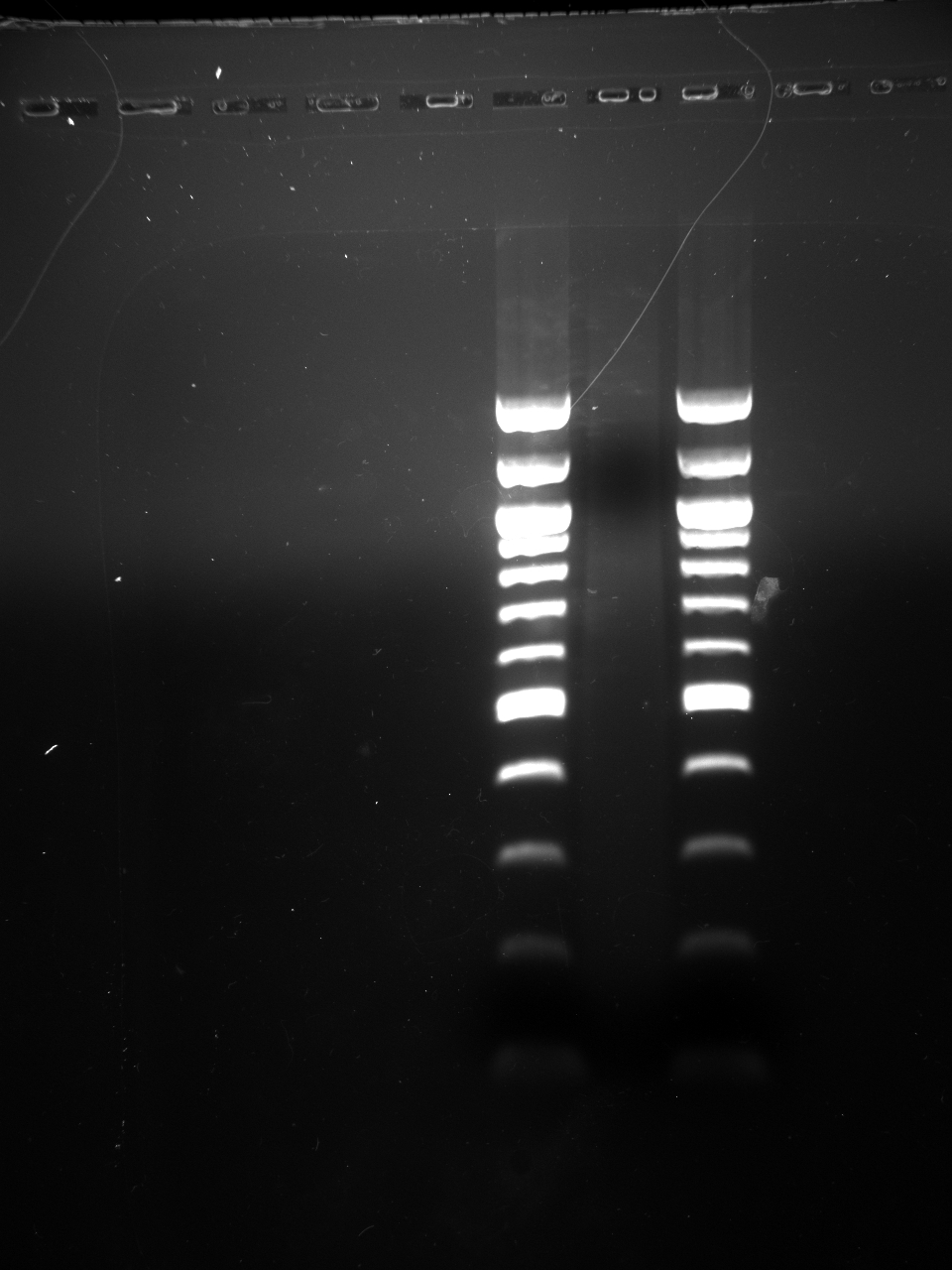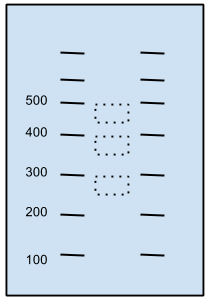Monday notes
Finished review for PLOS Biology
- Biology seminar - Matt Forister
- great research showing highly polygenic additive genetic basis for host switch
no genomic evidence for antagonistic pleiotropy
ddRADseq
- Pooled 40 ul of each ligation in single 1.5 ml tube, leaving ~ 10 ul for diagnostics.
- AMPure bead purification - modified rack method using 96-well magnet plate
- Total pool volume 320 ul.
- 480 ul AMPure beads
- Two washes with 500 ul 70% EtOH
- Eluted in 30 ul H2O
- Size selection
- ran gel for 2.5 hrs at 120V.

Note very little to no DNA staining.
- To size select (1) 200+-20 bp, (2) 300+-20 bp, (3) 400 +- 20bp, had to account for 76 bp of adapter sequence. Cut gel pieces 250 - 300 bp, 350 - 400 bp, 450 - 500 bp

- QIAquick purification, eluting in 12 ul H2O
- Sent all ligation samples (T1-T7) and 3 size-selected pooled samples (P1-P3) for Bioanalyzer analysis
Reading
Alexander, J.M. (2013). Evolution under changing climates: climatic niche stasis despite rapid evolution in a non-native plant. Proceedings of the Royal Society B: Biological Sciences, 280, 20131446.
- invasion of Lactuca serriola to study climatic niche evolution
- invasive genotypes primarily from Europe, with low-levels admixture from Asia
- non-native plants flower earlier than ancestral European plants, but not different from Asian plants
climatic niche expanded by over 30% in non-native range compared with Europe…primarily in arid regions
- however, do not exceded phenotypic variation within native range; niche conservatism?
Moore, K.A. & Stanton, M.L. (2014). Propagule Limitation, Disparate Habitat Quality, and Variation in Phenotypic Selection at a Local Species Range Boundary. PLoS ONE, 9, e89404.
- fine-scale spatial heterogeneity in ecological dynamics and selection
- decline in habitat quality beyond edge, but migrants able to establish on unoccupied microsites at and beyond edge
- unique selection pressures in margin habitat
Sarup, P., Sørensen, J.G., Kristensen, T.N., Hoffmann, A.A., Loeschcke, V., Paige, K.N. & Sørensen, P. (2011). Candidate Genes Detected in Transcriptome Studies Are Strongly Dependent on Genetic Background. PLoS ONE, 6, e15644.
…little overlap across studies between putative candidate genes for the same traits in the same sex. Instead there was a high degree of overlap between different traits and sexes within the same genetic backgrounds.
Scholes, D.R., Suarez, A.V. & Paige, K.N. (2013). Can endopolyploidy explain body size variation within and between castes in ants? Ecology and Evolution, 3, 2128–2137.
- endoreduplication process by which nuclear genome is replicated without mitosis resulting multiple genome copies
- flow cytometry to asses endoreduplication among castes of ants
- among females, endoreduplication positively related with size within worker caste
- males had highest rates of endoreduplication, compensates for haploid origin
UseR group
Using R with SQL Server
